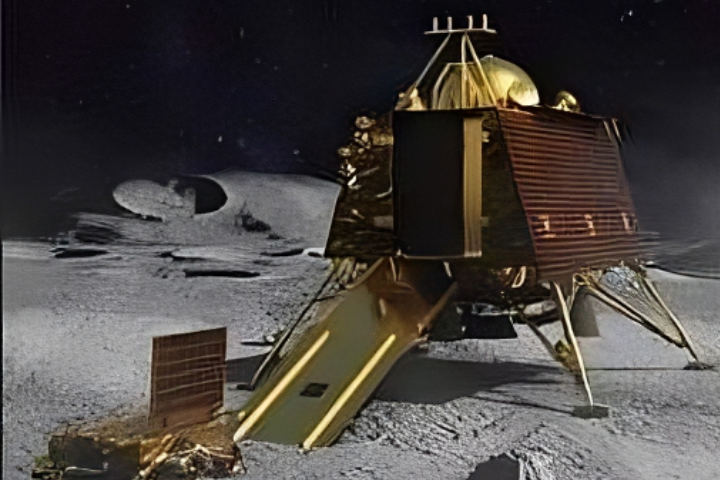Chandrayaan-3, the landmark moon mission by the Indian Space Research Organisation (ISRO), continues to captivate science enthusiasts. Recently, data from the Pragyan rover revealed the discovery of an ancient crater measuring 160 km in diameter.
The Largest And Oldest Impact Basin On The Moon’s Surface
This crater likely formed before the South Pole-Aitken (SPA) basin, the largest and oldest impact basin on the moon’s surface. The discovery stemmed from analyzing data transmitted by the Vikram lander and Pragyan rover, both of which successfully completed their missions on September 3, 2023, before entering sleep mode.
In a paper published by PRL Ahmedabad scientists titled “Chandrayaan-3 Landing Site Evolution by South Pole-Aitken Basin and Other Impact Craters,” it is stated that the Chandrayaan-3 mission landed (CH-3 landing site) within a buried impact crater that predates the SPA basin, located approximately 350 km from the rim of the South Pole-Aitken basin.
Chandrayaan-3 is India’s third lunar exploration mission launched on July 14, 2023, the mission aims to demonstrate the ability to perform a soft landing on the moon and conduct scientific research. It consists of a lander named Vikram and a rover named Pragyan. It successfully landed on the moon on August 23, 2023, making India the first country to land near the lunar south pole.
Chandrayaan-3’s Pragyan Rover Reveals Ancient Structure
Using the Pragyan rover’s Navcam and high-resolution optical camera, ISRO captured a “semi-circular, heavily degraded structure” surrounding the landing site. This structure is now recognized as one of the oldest on the moon, believed to have been buried by ejecta materials from the SPA basin and 11 other surrounding basins.
Findings from the Chandrayaan-3 mission are assisting scientists globally in gaining a deeper understanding of the moon. The Pragyan rover has been conducting experiments and analyzing the lunar surface, providing valuable data about the moon’s geology and history. This knowledge could benefit future moon missions, including Chandrayaan-4, which is scheduled for 2027.





GIPHY App Key not set. Please check settings